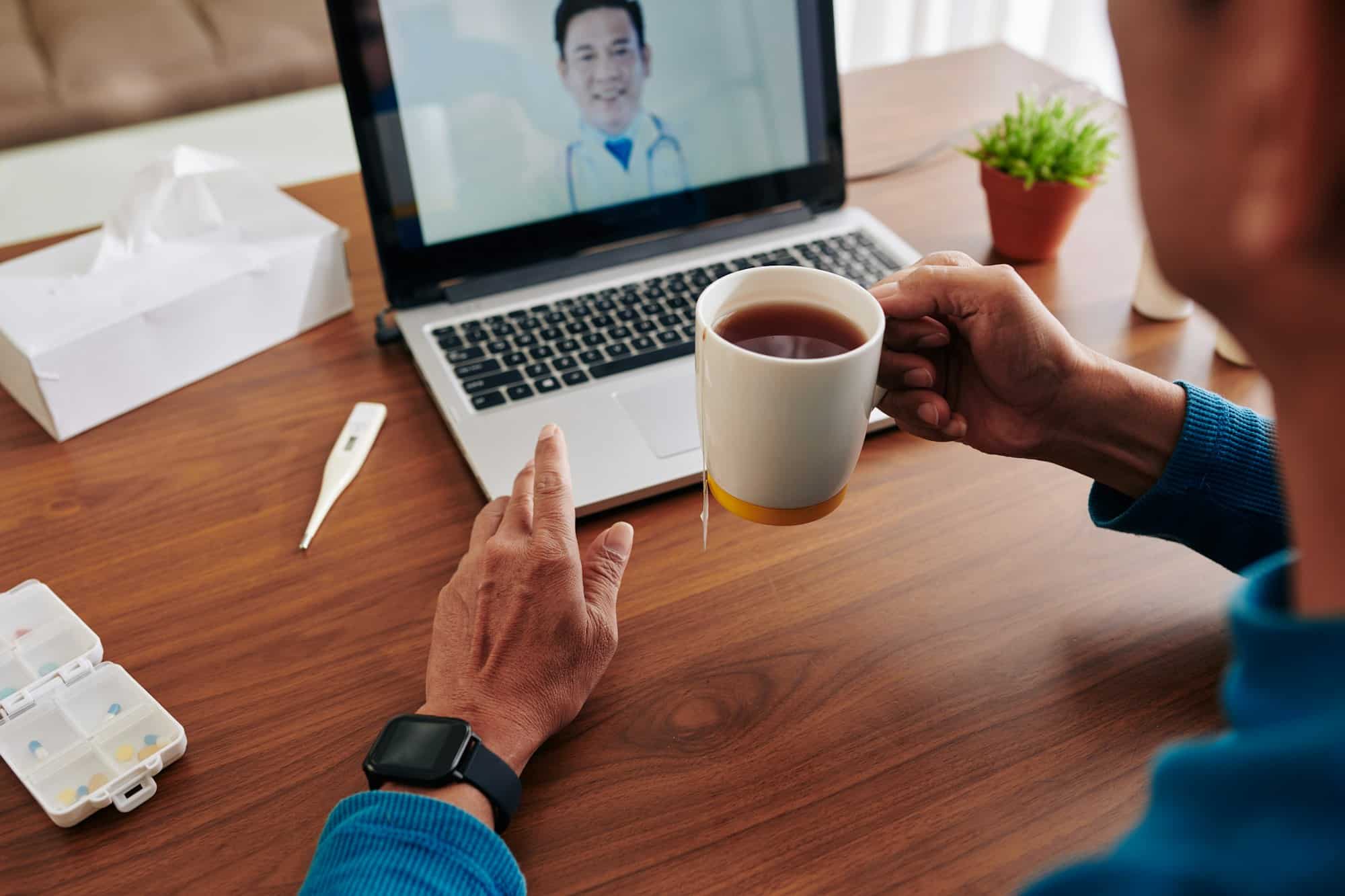In the past, rural patients often had to travel long distances for medical care. They braved bad weather and took precious time off work, all in pursuit of good health. However, telemedicine, a product of modern technology, is transforming this narrative. It’s effectively bridging the gap in healthcare access between rural and urban communities. Let’s delve deeper into how this change is happening.
Telehealth: A Game Changer in Providing Medical Care
Telehealth is a new wave in healthcare delivery. It leverages technology, offering healthcare services remotely via digital platforms. This means patients can consult with healthcare providers from the comfort of their homes. The need for long commutes to a hospital or health center is eliminated, which is particularly beneficial for rural residents.
Additional reading : What’s the Potential of Hydrogen Fuel in Decarbonizing Public Transport?
Telehealth also allows for remote patient monitoring. Patients’ health data can be collected at home using mobile health (mHealth) technology and sent to physicians for analysis. This capability is critical for managing chronic diseases, where regular monitoring and timely intervention can prevent complications.
Another notable telemedicine service is teleconsultation, which enables patients to access expert medical advice. In rural areas, the scarcity of specialized medical practitioners makes this service invaluable. Patients can consult with specialists across different fields without leaving their communities.
Also to discover : Can AI-Powered Analysis Predict and Prevent Infrastructure Failures?
How Telehealth Is Addressing the Rural Healthcare Challenge
Rural areas have long been grappling with healthcare challenges. They range from a shortage of healthcare providers to limited access to specialized care. However, telemedicine is proving to be a potent solution.
Telemedicine is tackling the shortage of healthcare providers head-on. It enables rural patients to interact with healthcare professionals virtually, thereby bypassing geographical barriers. Now, rural patients can access the same level of care as their urban counterparts.
The remote patient monitoring feature of telehealth reduces hospital visits and admissions. It’s particularly beneficial for the elderly, those with mobility issues, and patients with chronic diseases. They can have their health monitored from home, avoiding unnecessary hospital trips.
Teleconsultations allow rural patients to access specialized care, often lacking in their communities. They can receive expert advice without having to travel to urban centers.
The Role of Technology in Telemedicine
Technology is the backbone of telemedicine. It’s what enables healthcare to be delivered remotely, ensuring that rural patients can access medical care with minimal barriers.
The primary tool in telemedicine is the internet. It’s what connects patients with healthcare providers, allowing them to interact in real time. Health data can also be transmitted securely over the internet, ensuring that patient information is protected.
mHealth technology is crucial for remote patient monitoring. It includes devices like fitness trackers and apps that collect health data. This data is then sent to healthcare providers for analysis.
The use of electronic health records (EHRs) is another tech-driven aspect of telemedicine. EHRs digitize patients’ health information, allowing it to be shared and accessed easily. This ensures continuity of care, even when patients consult with different healthcare providers.
Telemedicine’s Impact on Rural Communities
Telemedicine is altering the healthcare landscape in rural areas. It’s not only improving access to healthcare but also enhancing the quality of care.
Telemedicine has made healthcare more accessible for rural patients. They no longer have to travel long distances for medical consultations or follow-ups. This is especially beneficial for those who are elderly or battling chronic illnesses.
The use of telemedicine also improves the quality of care. It enables regular monitoring of patients’ health, ensuring that any changes are detected and addressed promptly. It also facilitates access to specialized care, which previously might have been out of reach for many rural patients.
The Future of Telemedicine in Rural Healthcare
Telemedicine’s impact on rural healthcare is just the beginning. As technology evolves, we can expect telemedicine to become even more integral to healthcare delivery.
In the future, we could see a rise in AI-driven healthcare. AI could analyze patients’ health data, alert healthcare providers of any anomalies, and even suggest potential treatment avenues. This would not only improve healthcare efficiency but also personalize care to each patient’s needs.
We can also expect telemedicine to play a significant role in managing public health crises. During pandemics, for instance, telehealth could facilitate remote consultations, reducing the need for patients to visit hospitals and potentially exposing themselves to viruses.
There’s no doubt that telemedicine is revolutionizing rural healthcare. It’s bridging the gap in healthcare access, providing quality healthcare right at patients’ doorsteps. As technology evolves, we can expect this trend to continue, making healthcare even more accessible for rural patients.
The Invaluable Savings and Improvements from Telemedicine
The adoption of telemedicine in rural healthcare comes with significant cost savings and improvements in the quality of care. These benefits are felt by both patients and healthcare providers, further solidifying telemedicine’s importance in rural healthcare.
Patients save on transportation costs, time spent on travel, and lost income from taking time off work. A study indexed in Pubmed Google revealed that patients who used telehealth services spent less on medical expenses and had fewer hospital readmissions.
For healthcare providers, telemedicine reduces the strain on healthcare facilities and human resources. It also enables healthcare professionals to serve more patients in less time. According to research published in Google Scholar, telemedicine can increase productivity in rural healthcare facilities by up to 20%.
The quality of care is also improved, thanks to digital health technologies. Remote patient monitoring allows for early detection and management of health issues, reducing the severity of diseases and improving patients’ outcomes. Teleconsultations also offer patients the chance to receive expert advice, making it easier for them to make informed health decisions.
Mental health care, which has often been overlooked in rural areas, is another area where telemedicine has made a significant impact. With teletherapy and online mental health resources, rural patients can now access mental health services at their convenience.
Moreover, during the COVID pandemic, telemedicine showed its potential in mitigating the impact of public health crises. With video conferencing, patients could consult with doctors without risking exposure to the virus.
Pushing Forward: The Next Steps in Telemedicine
While telemedicine has already started transforming rural healthcare, there’s still a lot more to be done. Moving forward, the focus should be on improving and extending telehealth services, and addressing barriers to its adoption.
Firstly, there’s a need to extend the range of services offered via telemedicine. Some areas that could be explored include remote surgery, advanced diagnostic imaging, and more specialized care like oncology and endocrinology.
Secondly, the digital divide in rural areas needs to be addressed. While telemedicine provides a way for rural residents to access healthcare, not everyone has access to the necessary technology or the internet. Efforts should be made to improve internet connectivity in rural areas and ensure that patients have access to the necessary devices for telemedicine.
Lastly, there’s a need to improve patient’s and healthcare providers’ digital literacy. This will allow them to make full use of telehealth services and benefit from the convenience it offers. Training programs could be developed to equip both patients and healthcare professionals with the necessary digital skills.
Conclusion: Building a Healthier Future with Telemedicine
Telemedicine is truly revolutionizing rural healthcare. It’s transforming how patients access healthcare and how healthcare services are delivered. It’s making healthcare more accessible, more affordable, and more patient-centered.
It’s also opening up new opportunities for improving the quality of care. With remote patient monitoring, patients’ health can be managed more effectively. With teleconsultations, patients have access to expert advice, improving their health outcomes.
But the journey doesn’t end here. As technology evolves, so too will telemedicine. With continuous improvements, it’s expected that telemedicine will play an even bigger role in rural healthcare in the future. As we look towards the future, one thing is clear: the potential for telemedicine in rural areas is enormous, and it’s only just beginning to be tapped.











